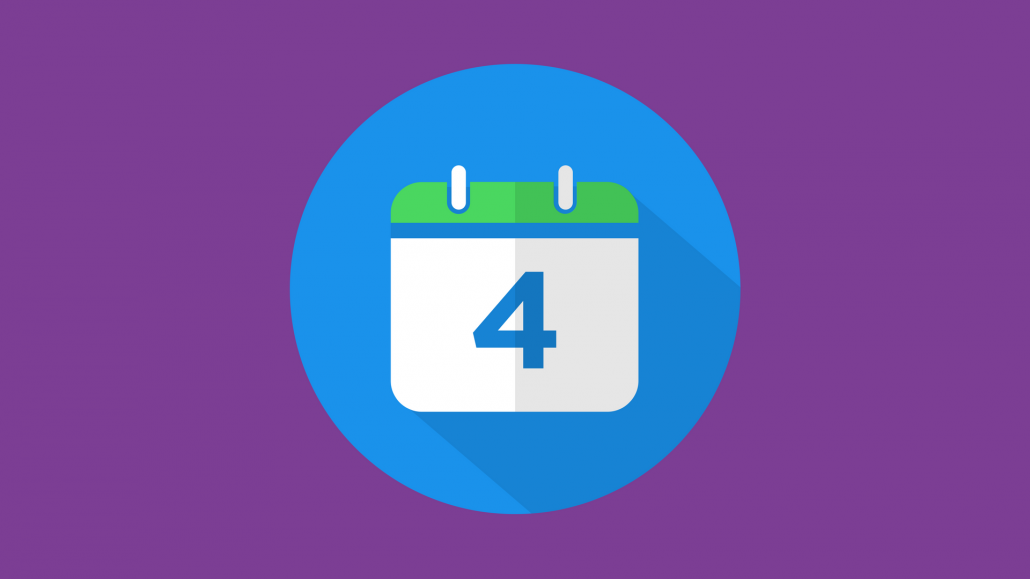min read
 When Giving Tuesday was first introduced in 2012, Blackbaud (the world’s largest donation processor) processed $10.1M in one day for charities in the US. In 2013, that number more than doubled to $28M. Last year alone, #GivingTuesday raised $380M overall.
When Giving Tuesday was first introduced in 2012, Blackbaud (the world’s largest donation processor) processed $10.1M in one day for charities in the US. In 2013, that number more than doubled to $28M. Last year alone, #GivingTuesday raised $380M overall.
Giving Tuesday’s success and continued growth paired with other examples of statewide giving like Colorado Gives Day, Arizona Gives Day, and Kentucky Gives Day has pushed nonprofits to closely examine how this tactic should exist in an annual strategic plan.
During conferences we attended in 2012 and 2013 discussions were engulfed by trying to understand if these events were worth the stress and effort. Questions came up like “Do giving days just steal donations from other parts of the year?” and “Is there actual ROI considering all the work required from so many people?”
These questions are valid, and over the last 6 years, they’ve encouraged us to closely observe our clients at Community Funded to evaluate the pros and cons of giving day events.
What we’ve learned is that giving days present a tremendous opportunity provided your organization does two things: (1) prioritizes participation and (2) uses these events to cultivate an engaged community year-over-year.
Essentially, your overall strategy has to incorporate giving days holistically instead of treating them as one-off events to bring in “x” amount of money.
Let’s dig a bit deeper.
The universities listed below raised huge amounts of money with their giving day efforts:
|
Organization |
Amount Raised |
Donors |
Average Gift Size |
|
Cornell University |
$6,321,961 | 8,640 | $732 / donor |
|
Columbia University |
$14,560,943 | 14,269 | $1,020 / donor |
|
Arizona State University |
$3,222,522 | 3,125 |
$1,031 / donor |
| Purdue University | $13,700,000 | 7,943 |
$1,725 / donor |
| University of Missouri | $8,342,149 | 3,592 |
$2,322 / donor |
| Indiana University | $12,000,000 | 2,750 |
$4,364 / donor |
However, these institutions are not the majority.
As you can see in the breakdown of average gift size, there are lots of major gifts rolled into these totals. In some cases, organizations achieving these results are staffing a team that works year-round towards one objective: cultivating major donors to execute a successful giving event.
There’s nothing wrong with this approach. In fact, you should always strive to incorporate major donors into your giving day efforts by offering opportunities that match their passions. However, focusing solely on monetary results creates pressure to maintain them rather than prioritizing incremental growth in participation.
Overall, engagement and advocacy beyond the giving day transaction should be your biggest measures of success.
Engagement can be measured in many ways: volunteering before, during, or after an event, email open and click rates, surveys capturing word of mouth awareness, or additional and recurring gifts made post-event. Engagement over time is the most valuable, so focus on creating actionable follow-ups through the channels participants self-select.
Advocacy shows that people appreciate what you are doing and are willing to put their reputation on the line by asking their peers to support what they believe in. This can be anything from sharing through social networks to organic promotion through local media sources and corporate newsletters.
Concentrating on these metrics instead of a dollar amount presents the opportunity to significantly grow what we call your foundational community, or the people who are engaged and typically take action when asked.
Hosting Events as Unique as Your Community

Giving days unsurprisingly gained popularity parallel to crowdfunding entering the marketplace. This is because crowdfunding campaigns and giving days are tied together by a common denominator: community building.
In crowdfunding, typically 80-90% of the funding is a result of the marketing effort by the campaign creator or team. This also holds true regarding the efforts of an organization during a giving day.
For the majority of institutions who can’t staff a year-round giving day team, having a stand-alone event alleviates the pressure of relying solely on crowded national and statewide days. For those that can support a more intensive team commitment, the impact of any efforts is maximized by avoiding an over-solicited population.
The first step is to select a unique date to host your branded giving day. This allows you to concentrate on your community coming together with a focus on the organization, not just general philanthropy.
Your unique day can be the date your organization was founded, the day “tuition runs out” and donations are required to sustain the organization, the day the first students graduated, etc.
This allows you to “own” a timeframe that speaks specifically to your constituents as a trigger to unite and support the things they care about. Development teams can then work to engage the community that matters most: those with the potential for true organizational affiliation and affinity.
This is the starting point for new donors to become repeat givers.
Once you have your date selected, the next step is establishing and iterating your strategy.
Your primary giving day strategy should include defined audiences, various channels of communication, digital design assets, messaging standards, gamification, stewardship tactics, etc. To better define how to plan your event, check out our Giving Day Playbook.
With each successive giving day, you can tweak and iterate small parts of your strategy to improve your year-over-year results. Perhaps most importantly, if you’re committed to celebrating the community of participants directly after each event, your participation will grow along with the improvements you implement.
Once you’ve established your cadence, the final evolution in your giving day calendar should be around the concept of micro-sites.
More and more we’re working with our clients to deploy hyper-focused sites throughout the year with small, but very specific, affinity groups. Here are some examples:
- A month of giving for the class of 1986 School of Law with the current School of Law driving the effort.
- “Club Sports Week” targeting those who played with current players and coaches telling the stories of need and impact.
- Using a statewide giving day to feature all the organizational funds and initiatives that directly benefit the state, promoted by those involved in the activities.
- A month of reunion giving where class years compete.
The list goes on. Your institution will have its own fun and unique ideas, but the point is these events mirror the evolution of donor strategies requiring a focus on personalization to inspire.
As Brett Anderson, previous Chief Development Officer from Colorado State University, has said, “Less than 5% of my annual budget comes from Annual Giving, however it makes up more than 95% of my donors. These are my future major givers.”
Driving participation and engagement with a long-term cultivation strategy eventually leads to major gifts if done properly.
Outside of your donors, your giving days should also emote solidarity through the participation of authentic storytellers.
In one of our previous articles, Building a Culture of Philanthropy: The 5 Pillars, we speak about “a community of one.” This is the collaborative community that should be engaged during a giving day promoting all the great things your institution empowers them to do. It includes a variety of stakeholders: students, recent alumni, faculty, staff, parents and even local community members like the mayor of your town, local celebrities, and local businesses.
Each of these groups should be given the opportunity to celebrate, show appreciation, and highlight how your organization impacts them.
By empowering constituents throughout your institution to make common the responsibility of authentically telling their story to a defined group of people you cultivate a community that is engaged and excited to participate.
Building Your Annual Strategy

So, what should be done with regards to Giving Tuesday, state giving days, and other national philanthropy events?
This is where it gets interesting.
Regardless of the fiscal year, your annual strategy should kick-off with your primary giving day. The objective of this event is to drive as many new and existing supporters to your site to passionately self-select their affinities from a host of diverse options; all of which convey the magnitude of the impact your organization is making.
Next, throughout the remainder of the year and at strategic times relevant to your audience, deploy additional niche microsites with targeted affinities to build off the original engagement. Modify your primary giving day strategy appropriately for each micro-site to maximize your efforts and do more of what works while dropping tactics that don’t.
Finally, participate in all of the “universal” giving days that make sense, but do so in a way that offers donors a way to have a clear impact and cross-promotes your organization’s primary day.
One idea is to select the most popular fund from your primary giving day and focus all efforts on that the singular campaign on Giving Tuesday. An example might be buying meals for food insecure students.
In essence, your “unique day” should showcase a variety of the great stories you have to tell, while other giving events throughout the year should be more focused.
And never forget: after each event celebrate, celebrate, celebrate!
As one of our favorite peeps in the industry Lynne Wester has stated: donors must be thanked a minimum of 7 times after each gift of any amount. Thanking a donor implies showing appreciation, but more importantly thank your donors by being true to your commitments and to demonstrating the impact of their dollars. Share your progress through ongoing stories and, above all, be transparent!
Whether you agree with these thoughts or not, we hope that at a minimum it made you think about what you are currently doing to reach your community where they are: online!
One thing that we undoubtedly know about both crowdfunding and giving days is that they have inspired a radical paradigm shift in regards to how people connect and engage with organizations. After 30+ years of doing things a certain way, the demands and expectations of stakeholders are becoming dramatically different.
This is not just about new tactics to reach a new generation, but rather a fundamental paradigm shift regarding how we tell our stories, engage our community, and nurture the relationship between our donors big and small.






